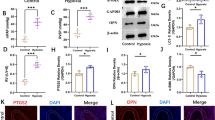Abstract
Objective
The nuclear factor erythroid 2 (NFE2)-related factor 2 (Nrf2) is associated with doxorubicin (DOX)-induced cardiac injury. It has been reported that microRNA-24-3p (miR-24-3p) may regulate the Keapl by mRNA degradation, whereas Keapl can suppress the activation of Nrf2. However, the role of miR-24-3p in DOX-related cardiotoxicity remains unclear.
Methods
The mice receiving DOX were used as cardiac injury model. In this study, an adenoassociated virus 9 system was used to deliver miR-24-3p or miR-scramble to mice hearts. The echocardiographic and hemodynamic analyses were used to evaluate the effects of miR-24-3p on cardiac function under DOX stimulation. ELISA and RT-PCR were used to detect protein or mRNA expressions associated with cardiac injury, inflammation response, apoptosis and oxidative stress. Western Blot were used for quantitative analysis of the roles of miR-24-3p in regulating Nrf2 expression. H9C2 cells used to verify the role of miR-24-3p in vitro.
Results
We found that miR-24-3p mRNA was significantly decreased in DOX-treated mice and cardiomyocytes. Overexpression of miR-24-3p blocked cardiac injury caused by DOX injection, as reflected by the reduction in the levels of cardiac troponin I, creatinine kinase isoenzyme MB and the N-terminal pro brain natriuretic peptide. Furthermore, miR-24-3p reduced oxidative stress and cell loss without affecting the inflammation response. As expected, we found that Nrf2 was upregulated by miR-24-3p supplementation, and that the protective efforts of miR-24-3p supplementation were abolished when Nrf2 was silenced.
Conclusion
The results from this study suggest that miR-24-3p protects cardiomyocytes against DOX-induced heart injury via activation of the Nrf2 pathway. miR-24-3p supplementation may be a novel strategy to counteract the cardiac side effects of DOX treatment.
Similar content being viewed by others
References
Hong YJ, Kim TK, Hong D, et al. Myocardial Characterization Using Dual-Energy CT in Doxorubicin-Induced DCM: Comparison With CMR T1-Mapping and Histology in a Rabbit Model. JACC Cardiovasc Imaging, 2016,9(7):836–845
Milano G, Biemmi V, Lazzarini E, et al. Intravenous administration of cardiac progenitor cell-derived exosomes protects against doxorubicin/trastuzumab-induced cardiac toxicity. Cardiovasc Res, 2020,116(2): 383–392
Kubben N, Zhang W, Wang L, et al. Repression of the Antioxidant NRF2 Pathway in Premature Aging. Cell, 2016,165(6):1361–1374
Li S, Wang W, Niu T, et al. Nrf2 deficiency exaggerates doxorubicin-induced cardiotoxicity and cardiac dysfunction. Oxid Med Cell Longev, 2014,2014:748524
Guo Z, Mo Z. Keap1-Nrf2 signaling pathway in angiogenesis and vascular diseases. J Tissue Eng Regen Med, 2020,14(6):869–883
Zhao MY, Wang LM, Liu J, et al. MiR-21 Suppresses Anoikis through Targeting PDCD4 and PTEN in Human Esophageal Adenocarcinoma. Curr Med Sci, 2018,38(2):245–251
Yang D, Li JS, Xu QY, et al. Inhibitory Effect of MiR-449b on Cancer Cell Growth and Invasion through LGR4 in Non-Small-Cell Lung Carcinoma. Curr Med Sci, 2018,38(4):582–589
Kang MJ, Park SY, Han JS. MicroRNA-24-3p regulates neuronal differentiation by controlling hippocalcin expression. Cell Mol Life Sci, 2019,76(22):4569–4580
Xiao X, Lu Z, Lin V, et al. MicroRNA miR-24-3p Reduces Apoptosis and Regulates Keap1-Nrf2 Pathway in Mouse Cardiomyocytes Responding to Ischemia/Reperfusion Injury. Oxid Med Cell Longev, 2018,2018: 7042105
Yuan YP, Ma ZG, Zhang X, et al. CTRP3 protected against doxorubicin-induced cardiac dysfunction, inflammation and cell death via activation of Sirt1. J Mol Cell Cardiol, 2018,114:38–47
Fan D, Yang Z, Liu FY, et al. Sesamin Protects Against Cardiac Remodeling Via Sirt3/ROS Pathway. Cell Physiol Biochem, 2017,44(6):2212–2227
Liu FY, Fan D, Yang Z, et al. TLR9 is essential for HMGB1-mediated post-myocardial infarction tissue repair through affecting apoptosis, cardiac healing, and angiogenesis. Cell Death Dis, 2019,10(7):480
Fan D, Yang Z, Yuan Y, et al. Sesamin prevents apoptosis and inflammation after experimental myocardial infarction by JNK and NF-kappaB pathways. Food Funct, 2017,8(8):2875–2885
Jiang Y, Zhang Q. Catalpol ameliorates doxorubicin-induced inflammation and oxidative stress in H9C2 cells through PPAR-gamma activation. Exp Ther Med, 2020,20(2):1003–1011
Zhang X, Hu C, Kong CY, et al. FNDC5 alleviates oxidative stress and cardiomyocyte apoptosis in doxorubicin-induced cardiotoxicity via activating AKT. Cell Death Differ, 2020,27(2):540–555
Yang D, Liu HQ, Liu FY, et al. The Roles of Noncardiomyocytes in Cardiac Remodeling. Int J Biol Sci, 2020,16(13):2414–2429
Zhang X, Yoon JY, Morley M, et al. A common variant alters SCN5A-miR-24 interaction and associates with heart failure mortality. J Clin Invest, 2018,128(3):1154–1163
Xu M, Wu HD, Li RC, et al. Mir-24 regulates junctophilin-2 expression in cardiomyocytes. Circ Res, 2012,111(7):837–841
Liu D, Ma Z, Di S, et al. AMPK/PGC1alpha activation by melatonin attenuates acute doxorubicin cardiotoxicity via alleviating mitochondrial oxidative damage and apoptosis. Free Radic Biol Med, 2018,129:59–72
Gao WL, Li XH, Dun XP, et al. Grape Seed Proanthocyanidin Extract Ameliorates Streptozotocin-induced Cognitive and Synaptic Plasticity Deficits by Inhibiting Oxidative Stress and Preserving AKT and ERK Activities. Curr Med Sci, 2020,40(3):434–443
Barancik M, Gresova L, Bartekova M, et al. Nrf2 as a key player of redox regulation in cardiovascular diseases. Physiol Res, 2016,65 Suppl 1:S1–S10
Pacak CA, Mah CS, Thattaliyath BD, et al. Recombinant adeno-associated virus serotype 9 leads to preferential cardiac transduction in vivo. Circ Res, 2006,99(4):e3–9
Manno CS, Pierce GF, Arruda VR, et al. Successful transduction of liver in hemophilia by AAV-Factor IX and limitations imposed by the host immune response. Nat Med, 2006,12(3):342–347
Author information
Authors and Affiliations
Corresponding author
Ethics declarations
The authors declare that they have no conflict of interest.
Additional information
This project was supported by National Natural Science Foundation of China (No. 80700289) and Medical Research Foundation of Wuhan Municipal Health Commission (No. WX19Q15).
Electronic supplementary material
Rights and permissions
About this article
Cite this article
Fan, D., Chen, Hb., Leng, Y. et al. MiR-24-3p Attenuates Doxorubicin-induced Cardiotoxicity via the Nrf2 Pathway in Mice. CURR MED SCI 42, 48–55 (2022). https://doi.org/10.1007/s11596-022-2536-1
Received:
Accepted:
Published:
Issue Date:
DOI: https://doi.org/10.1007/s11596-022-2536-1




